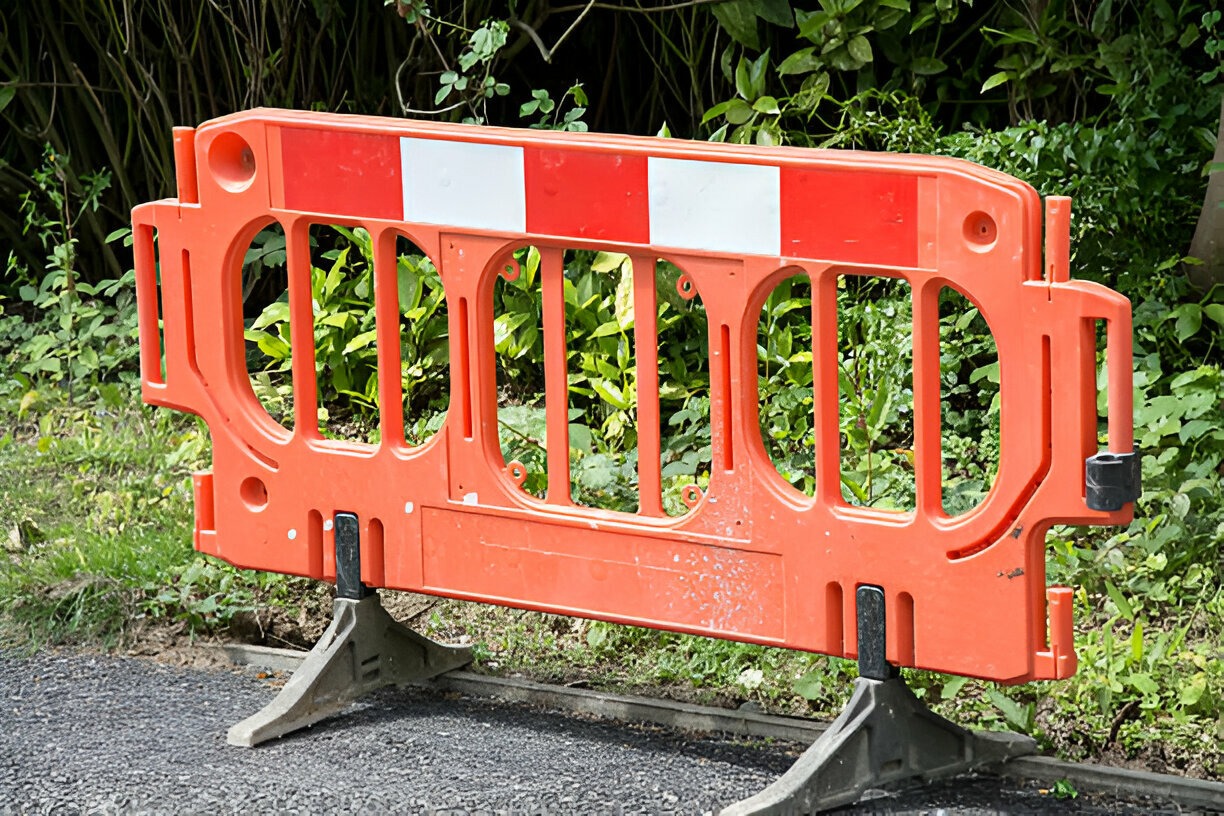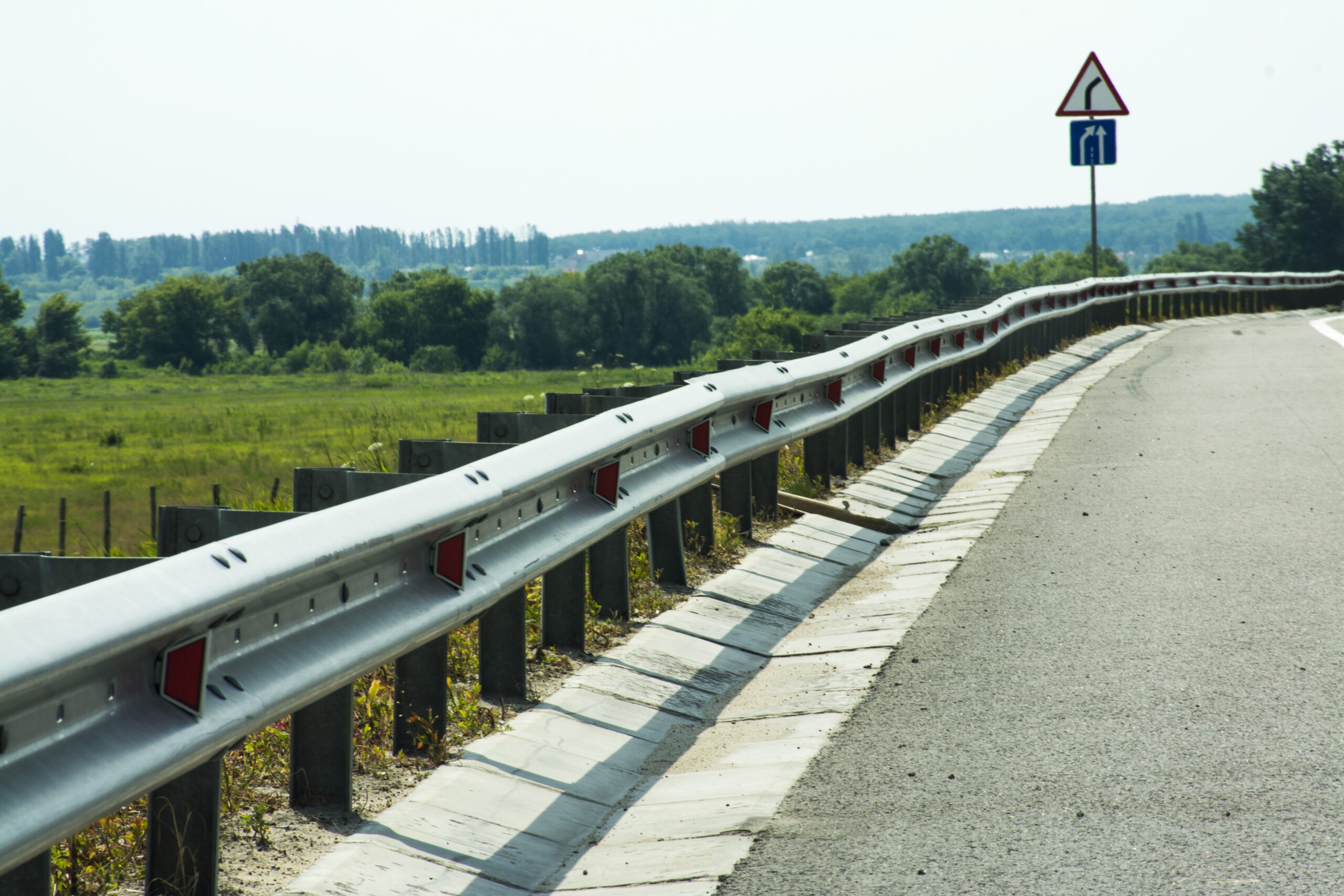How Crash Barriers Save Lives: The Science Behind Their Effectiveness
Have you ever seen an accident or the site after an accident? If yes then you must have seen broken guardrails and barriers. Ever wondered why they were there or thought about How these broken metal pieces had just saved a life?Accidents can happen because of multiple reasons but most prominent ones are Run off road accidents(RORs) and cross median accidents. 30 to 40% of fatal road accidents are caused by RORs. Cross median accidents are equally dangerous, people lose control of the vehicle when they face another vehicle crossing in the middle of the road. Crash Barriers were designed for such instances. They might look like a solid guardrail to withstand collision impact but actually they work in multiple ways. They are engineered to minimise the fatality and possibilities of accidents. They have a critical role to play on the roads. They also stop people from crossing over to other lanes in high speed and high traffic areas.
In this Blog we will not leave any stone related to crash barriers unturned. There is complex physics behind the marvelous working of a crash barrier. We will learn the science and types of crash barriers about how and why there are different barriers. Each and every barrier is used for different purposes and under different circumstances.
What are the core principles and physics behind the work?
Crash barriers work in multiple ways and each way uses different science behind it. It absorbs kinetic energy, redirects vehicles and also absorbs collision impact thus reducing fatality by a great margin.
Pacifying kinetic energy
- Kinetic energy is the energy generated by the motion of anything moving. If you move your hand you are generating kinetic energy. If you punch someone you can see him bleed after kinetic energy transfer to them. Now think if your small hand can cause such an impact how much a heavy car moving at high speed generates kinetic energy.
- Now crash Barriers work to absorb and dissipate the force of impact. They take in kinetic energy, break from that energy and let the vehicle slow down. If a barrier is too rigid and doesn’t break from impact then force will bounce back on the vehicle and passenger. This can have adverse effects on vehicles and passengers.
Redirecting the Vehicle
- Some barriers are not made to resist force of impact and slow down the vehicle but they are made to redirect it. Redirecting vehicles back on the roads saves them from further damage and sometimes prevents accidents completely.
- Barriers like W Beam barriers, Metal Thrie beam barriers, and crash cushions(Roller type) are such barriers which are made to prevent accidents. They save vehicles from going off road and used in uneven lands and hilly regions.
- One more thing which can affect redirection of the vehicle is the impact angle of the vehicle with the barrier. Impact angle also has an effect over the severity of the crash and fatality. This brings us to a major concern which is that even though crash barriers reduce impact but they are not omnipotent and save you completely.
Energy absorption methods
- Controlled deformation – Crash barriers are designed in such a way so upon the moment of the impact they absorb the energy and deformed using that energy. This usage of energy makes the energy dissipate from the car and material used to make crash barriers are weaker. They broke from collision impact, also saving the car from more damages.
- Surface friction – Concrete or Jersey barriers are such barriers which don’t absorb the impact but they deflect most of the impact thus making the crash survivable. Sloped surface of concrete barriers lifts vehicles tyres and stop it with a friction between its surface and road
Types of Crash Barriers and How They Work
1. Rigid Barriers
These barriers do not bow on impact and are usually made of solid. They are meant to stop a vehicle completely.They are used in areas with high traffic and in areas which are more accident prone. These are the type of rigid barriers we commonly see:
- Concrete Barriers : These barriers are also known as jersey barriers or Fshaped barriers. They are Commonly found on highways, intersections, and work in progress areas. They prevent head-on collisions by separating roads and stopping the public from changing into opposite lanes. .
- Bridge Barriers: These are the kind of bridge barriers which are made to completely stop a vehicle from going off road. They are used on bridges and elevated areas to save vehicles from falling down from high heights.
- Reinforced Concrete Walls: These walls are used in urban areas. They are made to ensure pedestrian safety. They separate roads from footpaths so if an accident occurs then these barriers stop vehicles from harming the public.
2. Semi-Rigid Barriers
Semi Rigid barriers are strong barriers mostly used in high speed areas. They are not rigid and they are made to absorb and dissipate the force during impact. They deform during the crash thus reducing severity of the crash by a far margin. .
- W-Beam Guardrails: These are metal beam barriers. They consist of a W shaped metal wavy structure over a steel post. They are very common and you must have seen them on highways or expressways. They are commonly used on high speed roads. They are very effective to stop vehicles from derailing and reduce impact drastically.
- Thrie-Beam Guardrails: These barriers are an upgraded version of W beam barriers. They are reinforced Thrice and can absorb more impact and are more durable than W beam Crash barriers. They are used in expressways and roads with speed limits above 80kmph. They are very effective to prevent car rollovers.
Future Innovations in Crash Barrier Technology
New technology is making crash barriers even better:
- Smart Barriers: These have sensors that detect crashes and send alerts to emergency services.
- Self-Healing Materials: Some barriers can repair minor damage automatically.
- Energy-Redirecting Barriers: These are designed to move impact energy away from passengers, reducing injuries.
- Eco-Friendly Barriers: Researchers are developing sustainable barriers made from recycled materials to reduce environmental impact.
- Adaptive Barriers: Some barriers adjust their flexibility based on the vehicle’s size and speed, offering better protection for different types of crashes.
- Noise-Reducing Barriers: Some modern designs not only improve safety but also minimize traffic noise, benefiting residential areas.
Conclusion
Crash barriers are one of the most important yet underrated components of road infrastructure. Designed to absorb impact, redirect vehicles, and reduce the severity of crashes, these barriers play a vital role in preventing fatalities and minimizing injuries in road accidents. Whether it’s a W-beam guardrail on a highway or a rigid concrete barrier on a bridge, each type serves a specific purpose based on location, speed zones, and road conditions.
As road traffic continues to grow, especially on Indian highways and expressways, installing the right type of crash barrier has become essential. With advancements in barrier technology — like smart crash barriers with sensors, energy-redirecting designs, and sustainable materials — road safety is entering a new era.
Understanding how crash barriers work and where to use them is key for anyone involved in infrastructure planning, highway development, or traffic safety. These engineered structures are not just about stopping vehicles — they are about saving lives, every single day.




Add Comment